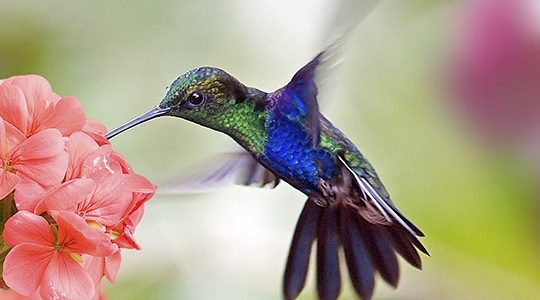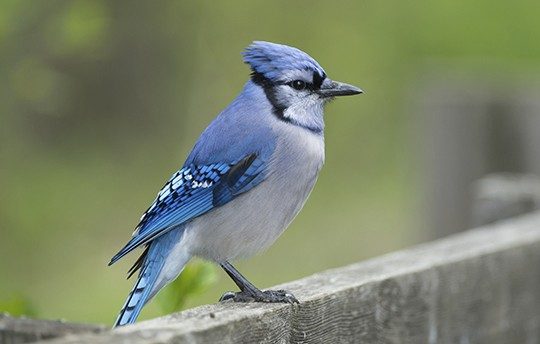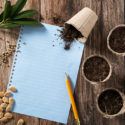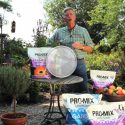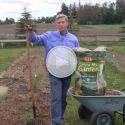As you prepare your shopping list for the garden centre this year include plants which will attract wildlife to your garden. I am talking about the kind of wildlife that Canadians really WANT in their yard…. like butterflies, song birds and hummingbirds. The secret to attracting song birds, hummingbirds and butterflies to your garden is providing their favourite food and nectar-laden flowers in a sheltered, warm and sunny location. Plant material plays a large role in attracting butterflies and hummingbirds (and song birds too!). Your choice of plants should include lots of native species, if you want to maximize the value of them as ‘magnets’ to butterflies and hummingbirds. Native plants that work:
- Echinacea purpurea (Purple Coneflower)
- Rudebeckia hirta (Black Eyed Susan)
- Yarrow
- perennial Salvia
- liatrus (shooting star)
Before planting, amend existing garden soil with PREMIER® BIO-MAX® fully composted manure. PREMIER® BIO-MAX® Manure meets the guidelines of the Compost Quality Alliance (CQA) for certification. Add nutrients and improve the structure of your garden with the safer alternative that meets the highest quality standards.
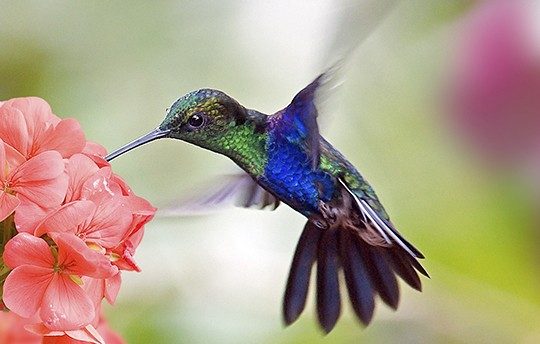
Hummingbirds
are migratory. They pass through our gardens once in spring and again in late summer / early fall. Have a hummingbird feeder set up near your kitchen window so that you can see them easily from the indoors. Hummingbirds are attracted by visual cues. Look for bright-coloured red or orange perennials and annuals with ‘trumpet’ shaped flowers for the hummingbirds. Bright, trumpet-shaped flowers include:
- Coral bells
- Monarda (Bee Balm)
- Trumpet vine
- Honeysuckle (both the hardy shrub and the vine)
- Salvia
- Foxglove
- Lupines
- Hibiscus (the tropical varieties, the hardy perennial and the ‘rose of Sharon’ woody shrub)
- Lavatera (annual)
- Rose mallow (annual)
- Hollyhock (biennial)
- Delphinium
- All hostas
- Daylilies
- Fuchsia (annual)
- Nicotiana (annual)
While hummingbirds are attracted to your garden visually, they will stay longer if the flowers used to attract them in the first place have a sweet fragrance. They are, after all, looking for nectar to feed on. Feed your flowering plants with Plant-Prod® Flowering Plant Fertilizer 15-30-15. This formulation should be used from the early stages of flower bud development through flowering when demand for phosphorous is high in the plant. 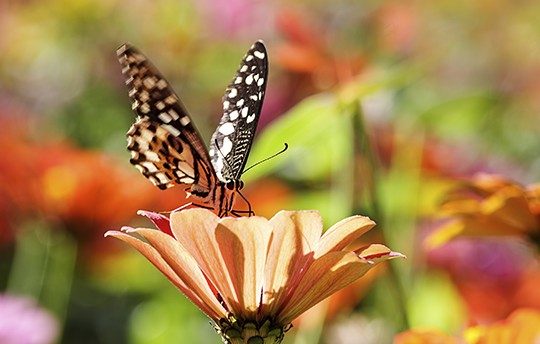
Butterflies
are attracted to your garden by scents in the first place. Flat, bold faced flowers are attractive to butterflies because they are easy to perch on. ‘Flat flowering’ plants that provide a nectar rich platform from which butterflies will feed include:
- Shasta daisy
- Queen Anne’s lace
- Butterfly Bush (Buddleia)
- Rudebeckia
- Asters (perennial and annual)
- Echinacea (Purple Coneflower)
- Liatris (Blazing Star)
- Speedwell
- Butterfly weed, and many others.
Plant lots of trees for nesting and protection for the birds, including hummingbirds. Use a mixture of deciduous and evergreen trees as both provide protection, food sources and shelter. Bright sunshine is favoured by most butterflies and hummingbirds in fine weather, but trees provide protection from wind and severe weather. Place lots of still water around the yard for drinking. Butterflies prefer drinking from shallow water. Bird baths work well. Empty them weekly to avoid mosquito breeding. Songbirds are attracted to plants that produce a seed head, for the most part. Their food preference is seeds: which is why we use a select, clean combination of seeds to attract them to our birdfeeders. Plants that attract songbirds later in summer and into the autumn, when the seed heads develop, include Beebalm, Echinacea [Coneflower], Globe Thistle, Sweet William and many ornamental grasses.
Birdfeeders:
You can attract different types of birds to the yard by offering different mixes of seeds:
- Black oil sunflower seed. Black oil sunflower seed is the universal bird food in my opinion. More birds seem to like it and go out of their way for it than any other single type of bird food.
- Finch Blend. I love wild finches. They are small, colourful much of the year and active beyond belief! Finches prefer a mix of pure white millet, Red millet and canary seed plus Nyjer and sunflower hearts.
- Songbird Blend. This should be a combination of shelled peanuts, red millet, black oil and striped sunflower, cracked corn, White Millet, Red Millet, canary seed and unhulled sunflower seed.
Blue Jays
– love peanuts in the shell. No sooner do I have the peanuts out there and they are calling one another to get over to Mark’s place – there is a feast in the making!! And in they fly. Be sure NOT to use the peanuts in the shell that you buy for human consumption! Avoid anything that has salt on it. With a little planning of your flower garden and investment in quality, Canadian produced bird seed blends; you can keep the wild birds coming to your yard year round! Just the right types of wildlife for most any gardener! Hummingbird feeders should provide easy access to the feeding station, a perch and most important –the ‘nectar’ that you put out for them should be refreshed each week. Otherwise the sugary liquid may go rancid. Place in an open area near a water source.
Suggested Products
-
No suggested products found.
